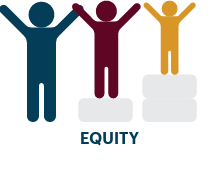At the beginning of last school year, the PV school district seemed to be making great strides in expanding equity for students from historically marginalized communities with its new Equity, Inclusion, and Community Engagement department led by Director Steven Willis. One of the first initiatives of this position was the establishment of an educational equity task force to gain insight from the community about how to better address students’ needs. They met five times throughout the 2022-2023 school year and presented their findings in a comprehensive action plan at their final meeting in May. Only days later, Mr. Willis left PV for a similar position at Norristown Area School District.
His resignation comes at a time of great contention and division among PV community members. The close of last school year was met with various threats of book banning, and not even two months into the 2023-2024 year, a restrictive policy forcing students to use the bathroom of their biological sex was proposed and passed, expediting the traditional policy process. As the lives of minority students, particularly trans and LGBTQ+ students, are under attack, the question is raised: what does “equity” actually look like, and for whom is it guaranteed? Because if Policy 720 has taught us anything, the protections for minority groups can just as easily be taken away as they were promised.
“I’m also concerned that the addition of specifications for who can use the restroom that doesn’t align with their sex really draws attention to the fact that we’re making allowances for some [but not all],” board member Dr. Tammy Campli said during the October 10th board meeting. “I think if anything this policy is spotlighting the fact that transgender students are being further marginalized.”
In the provisional equity task force committee, students, parents and staff met in groups to assess pressing issues throughout the district and suggest solutions. The research was based on street data: a method of using qualitative data, rather than solely statistics like test scores and attendance rates, when analyzing educational equity devised by researchers Shane Safir and Jamila Dugan. Some of the main goals outlined in the equity action plan include improvements to workforce diversity, implementation of restorative practices, greater understanding of cultural diversity in the district, identification of biases in district policies, community outreach to low-income families and families of color, and improvements to course curriculum to provide a more comprehensive and diverse perspective to history and other subjects.
Much of the progress that occurred last year were expansions in already existing systems – like more in-class opportunities for special education students, reapproval of the free breakfast initiative and a more robust mentorship program for English language learners. In addition, one of Mr. Willis’ lasting impacts on PV was the establishment of the Black Student Union at the high school. In a district that is 82.1% white, it is vital for students of color to have a community and a support system to rely on.
However, many goals have not yet been accomplished.
“We presented the information we collected, which was a goal. But we had larger goals beyond that which have gone unfulfilled,” sophomore Dwita Dave, one of the three equity task force student members, said.
Evan Kenny, another student representative, voiced similar concerns.
“Since Mr. Willis left, I have unfortunately not heard anything about it,” Kenny said. “Since I don’t believe his position has been filled yet, it would not surprise me if the action plan has been suspended indefinitely.”
However, the unanimous approval of Dr. Zacheya Champagne-Lee, who will replace Mr. Willis on or before December 11th of this year, during the October 11 board meeting, ushers in another opportunity for growth. The job description, now titled Supervisor of Equity and Student Services, was changed slightly to better define the responsibilities and hone in on helping students, shifting away from the community engagement aspect of the previous role.
“We really wanted to more closely tie the work of this position to not only helping the district move forward in its understanding of educational equity but also in how we can support students who face barriers because of their differences so that we can afford them the appropriate educational equity,” superintendent Dr. Russell said.
In the meantime, how can students advocate for their interests? While it is clear that community members and administration already have clear plans and goals, they are empty promises without concrete action. A permanent equity task force could be a way to prevent progress from being undone in one fell swoop – or board decision. Misinformation and confusion among community members were what escalated the recent controversy, leading to a rushed Policy 720. But if students were in a position to continually update board members and administration on the issues they’ve experienced or witnessed, there may be a better chance of securing and maintaining equity for all students.
